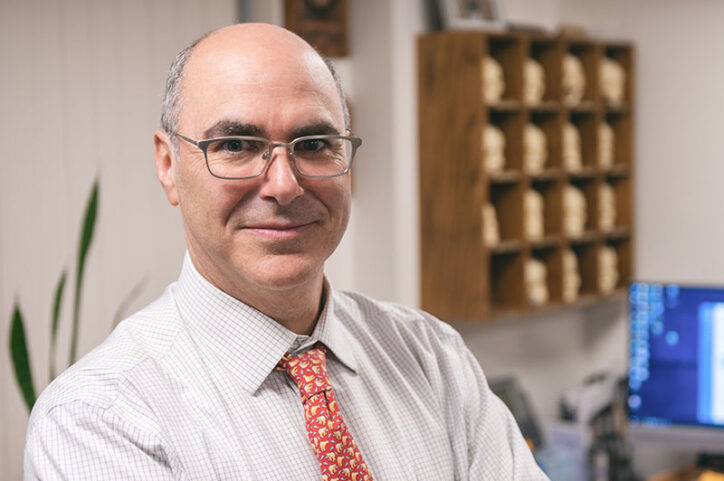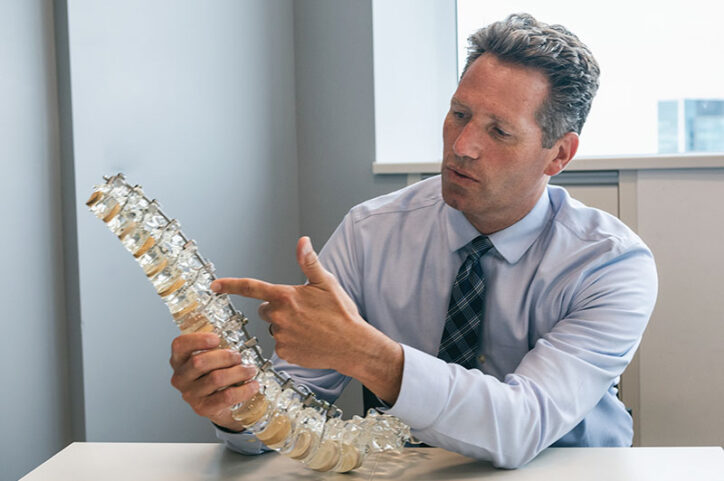In cases of pediatric cervical spine instability, two attending surgeons are better than one

Cervical spine instability (caused by congenital deformity, trauma, or a tumor) can affect children in a number of ways: from chronic headaches to bowel dysfunction to severe mobility limitations. In many cases, misaligned vertebrae compress the spinal cord and surrounding nerves, causing neurological issues, which, if left untreated, can lead to long-term disability.
Common indications for cervical fusion
Os odontoideum
Trauma
Down syndrome
Klippel-Feil syndrome
Aneurysmal bone cyst
Kyphosis
Basilar invagination
Spinal fusion surgery can stabilize a patient’s spine and decompress their nerves. However, placing screws and rods close to the spinal cord, nerve roots, and vertebral arteries carries significant risk. The small size of many pediatric patients’ vertebrae heightens this risk, particularly in patients with significant deformity. Further, many patients have comorbid medical conditions, such as cardiac issues, seizure disorders, or gastrointestinal disorders, that could be exacerbated by surgery.
So, while spinal fusion can improve a patient’s mobility, function, and quality of life, patient safety is critical.
A culture of multidisciplinary care
Boston Children’s Hospital has a long tradition of neurosurgeons and orthopedic surgeons collaborating on challenging cervical spine procedures. With the formation of the Complex Cervical Spine Program in 1998, the hospital formalized this collaboration. The program combines the expertise of two attending surgeons — a neurosurgeon and orthopedic surgeon — who work closely together to perform delicate cervical spine operations safely and efficiently.

“Multidisciplinary care is part of our culture at Boston Children’s,” says Mark Proctor, MD, neurosurgeon-in-chief and co-director of the Complex Cervical Spine Program. “This program is an example of how we pool our knowledge and experience, particularly when treating patients with rare or complex conditions.”
Since its inception, the program has employed this two-surgeon approach in hundreds of cervical spine operations. Patients have ranged in age from 2 to 26 and presented with a variety of cervical conditions. The resulting symptoms include motor deficits, sensory deficits, and in some cases, both.
Shared decision making
Before deciding that cervical fusion is in a patient’s best interest, a cross-functional team weighs the risks and benefits at a weekly high-risk spine meeting. Each specialist involved in a patient’s care takes part in the discussion, as do specialists from the Complex Care Service, who serve as an extra support system for patient families.

“The Complex Care team plays a huge role in making sure care is medically optimized for patients with comorbid conditions,” says Daniel Hedequist, MD, chief of the Spine Division and co-director of the Complex Cervical Spine Program. “They also provide extra support for families who may feel overwhelmed by the complexity of their child’s care.”
If a patient, their family, and each of the caregivers involved in their care agree that the potential benefits of spinal fusion outweigh the risks, the patient is scheduled for surgery.
Defined roles in the OR
When they perform cervical spine operations, the two surgeons have well-defined responsibilities that play on their skills and training.
- The neurosurgeon focuses on decompressing the spinal cord and affected nerves, removing any bone or tumor interfering with them.
- The orthopedic surgeon focuses on aligning the cervical spine, placing instrumentation, and fusion.
- If the procedure involves placing screws in the C1 or C2 vertebrae, the two surgeons collaborate on this stage of the procedure to ensure a safe trajectory.
Proctor, Hedequist, and their colleagues described these roles in detail in an article published in the Journal of Pediatric Orthopedics.
The team approach to complex pediatric spinal fusions at Boston Children’s provides a model of care for other programs. Rather than relying on a single surgeon, the Complex Cervical Spine Program combines expertise in neurosurgery and orthopedic surgery for operations that require both. By doing so, they have improved safety for patients with some of the most rare and complex cervical spine conditions.
“There are cases I would never tackle by myself, that I feel confident taking on in collaboration with an orthopedic surgeon who specializes pediatric spinal procedures,” says Proctor.
Learn more about the Complex Cervical Spine Program.
Related Posts :
-

Everli: Living her best life after atlantoaxial instability
When they travelled to the orphanage in China in early 2018, Shannon and Matt Gottschalk knew the toddler they hoped to ...
-

Saif looks ahead to life after spine surgery
Saif and his mother, Khawha Abbas, both had questions for Dr. Daniel Hedequist. For the past nine months, the family ...
-

Gracie’s complex spine
Halloween 2018 was no ordinary ghouls’ day for Gracie Neef. She and both her parents dressed up as the witches from “...
-

Generations of excellence in surgical care: Dr. Emans and Dr. Hogue
Some surgeons follow their patients for years, even decades. This is true of Dr. John Emans, who has treated patients ...





